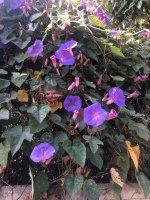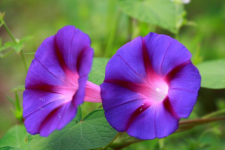My friend SWIM is hoping to try his hand at some LSA extractions in the near future. I've noticed around my neighborhood a crazy amount of what phone apps identify as Ipomea indica (see pic), so it seems like a decent free source of seeds. Does anyone have experience with the species?
The only issue is... no seeds are to be found on the spent flowers of these plants. Anyone have an idea of whats going on here? Are they not being pollinated? Seems odd with all the hummingbirds and bees flitting about.

The only issue is... no seeds are to be found on the spent flowers of these plants. Anyone have an idea of whats going on here? Are they not being pollinated? Seems odd with all the hummingbirds and bees flitting about.



